Hi, welcome to a new voltlog, today we’re going to teardown something interesting. As you can see on my left I have this huge antenna / radio assembly which btw weighs approximately 25 Kg so it’s not easy to handle in my small lab, in fact it takes up most of my bench so I will probably do the teardown on the floor.
This antenna is called Gigabeam Wifiber and it’s manufactured by a company called Gigabeam Corporation that went bankrupt in 2010. The system is supposed to act like a transparent access point offering gigabit links over radio where fiber infrastructure is difficult to implement.
The radios operate in the 71-76 and 81-86 GHz radio spectrum bands and the modulation format is BiPhase Shift Key (BPSK). They have a transmit power of 20 dBm which translates to 100mW and that is not really a great deal of power but the antenna has a large gain of 50dB. The system takes a gigabit fiber input and on the other side from the receiving antenna you get a gigabit fiber output.
I have a pair of these, one of them is broken and I’m going to attempt to find the fault and maybe fix it. I’m hoping the problem is somewhere in the power section because that will be an easy fix because otherwise I don’t have a spectrum analyzer to take a look at the different RF stages.
Anyway In this video you are only going to see the teardown but that should interesting on its own because I expect to see lots of RF magic inside and interesting system design.
Also checkout the high res photos below:
Here is a list of the components I managed to identify inside the unit:
- SMT4004: integrated programmable voltage manager IC which can monitor and control up to 4 independent supplies.
- Texas Instruments OPA725: low noise, high speed, rail-to-rail op-amp.
- Analog Devices AD8604: quad rail-to-rail, input and output, single-supply amplifier.
- Maxim MAX4663: quad, SPST, CMOS analog switch.
- IDT ICS601: Low phase noise 1 to 5 clock multiplier.
- XCF04: Xilinx In-System Programmable 4 Mbit ROMs for Configuration of FPGAs.
- Sipex 3232 RS232 transceiver.
- Semtech LC03-3.3: transient voltage suppressor.
- Intel XT971ALE: Single-Chip 10/100Mbps Ethernet PHY Transceiver.
- Pericom PI49FCT3803: 1 to 7 clock buffer targeted at networking applications.
- Maxim DS1339C: Real Time Clock.
- TLK1201: gigabit ethernet transceivers.
- Xilinx XC3S1500: Spartan 3 FPGA with aproximately 30K logic cells inside.
- MPC8270: PowerQUICC II Processor with embedded communications processor module targeted for telecom applications.
- Analog Devices ADF4154: frequency synthesizer.
- Hittite HMC368LP4: frequency doubler with both an input and output amplifier.
- Hittite HMC441: GaAs PHEMT MMIC medium power amplifier.
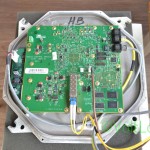
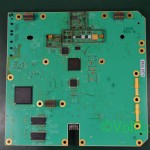
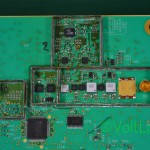
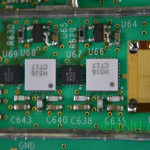
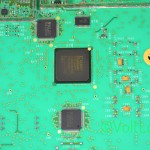
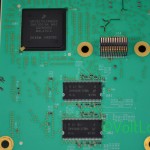
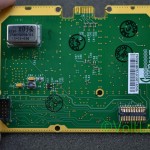
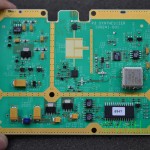
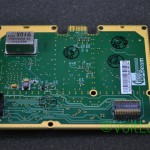
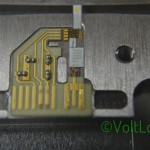
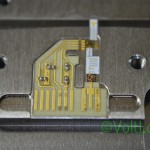
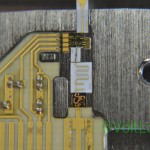
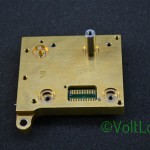
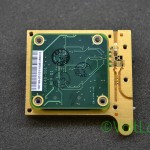
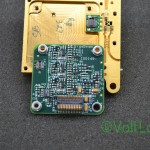
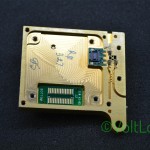
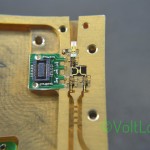
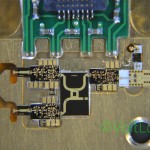
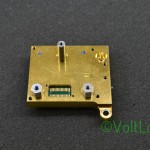
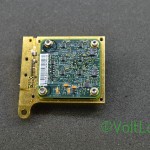
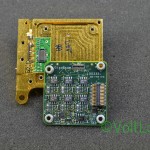
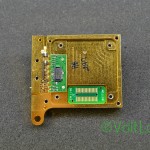
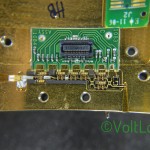
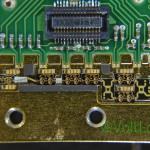
I was wondering if the HMC441 you identified was in the RX module?
If I remember correctly the HMC441 is on the synthesizer board.
Did you manage to fix your gigabeam unit? Also, do you know how to hook up power (48v to which pins?) and test the unit to see if it works? Have you found any documentation, or are you just reverse engineering? Anyway, several of us ham radio ops are looking to convert these units to the 78-81 GHz ham band. Mike K6ML
I couldn’t find the fault in the gigabeam unit unfortunately. I don’t have the unit anymore to check the pinout for you but it’s easy to figure it out if you open the radio unit cover, you will then be able to figure out V+ and GND and where they’re connected.
I’m afraid the lack of documentation on the hardware is making any kind of repair or mod nearly impossible. Unless you’re someone who designs/repairs this kind of radio equip for a living.